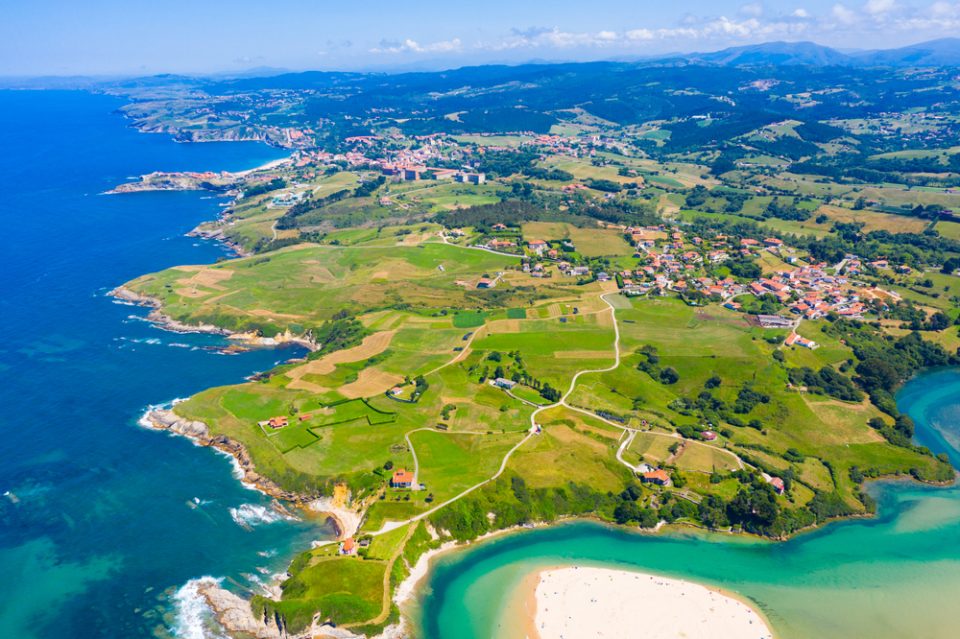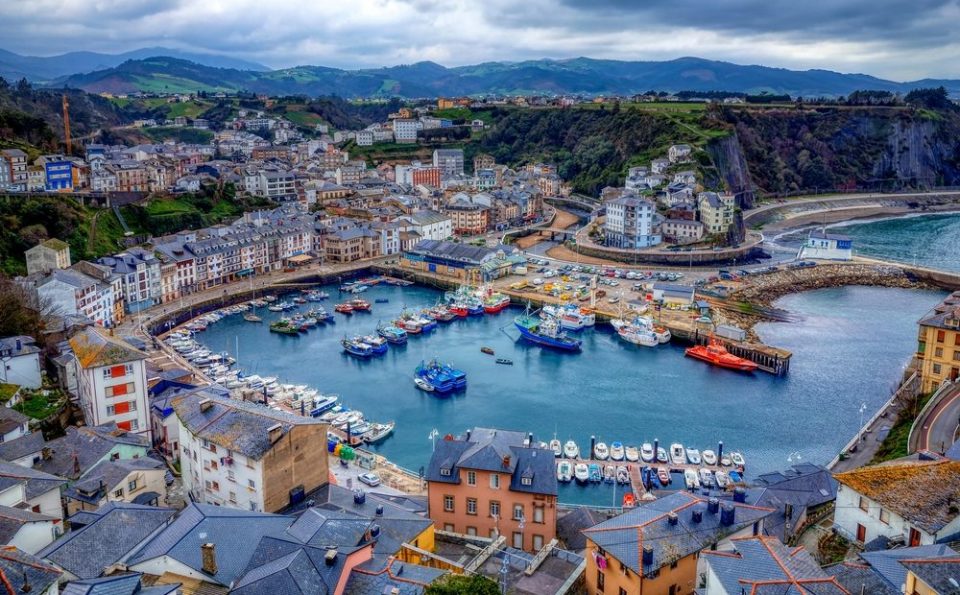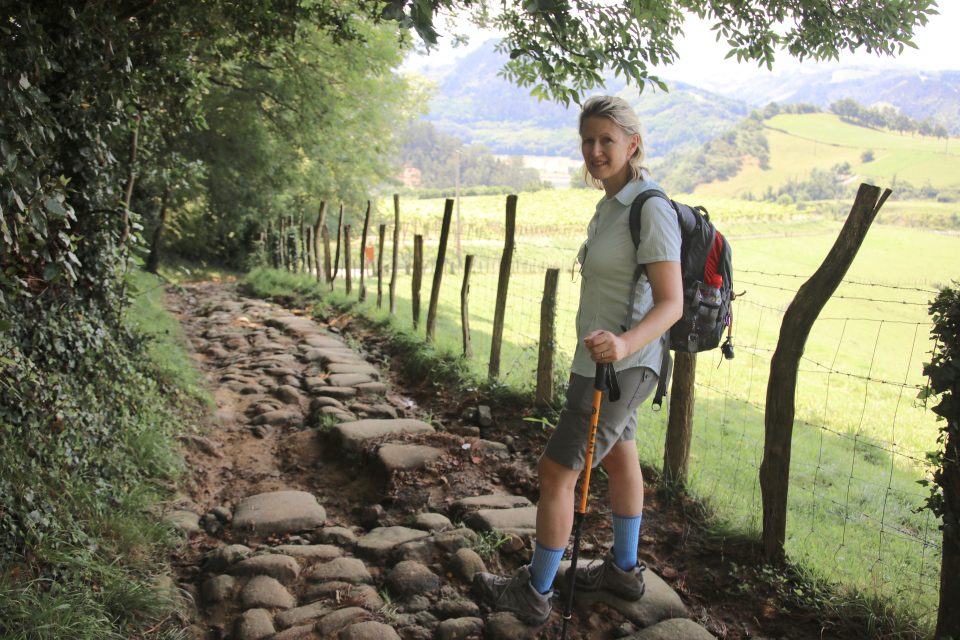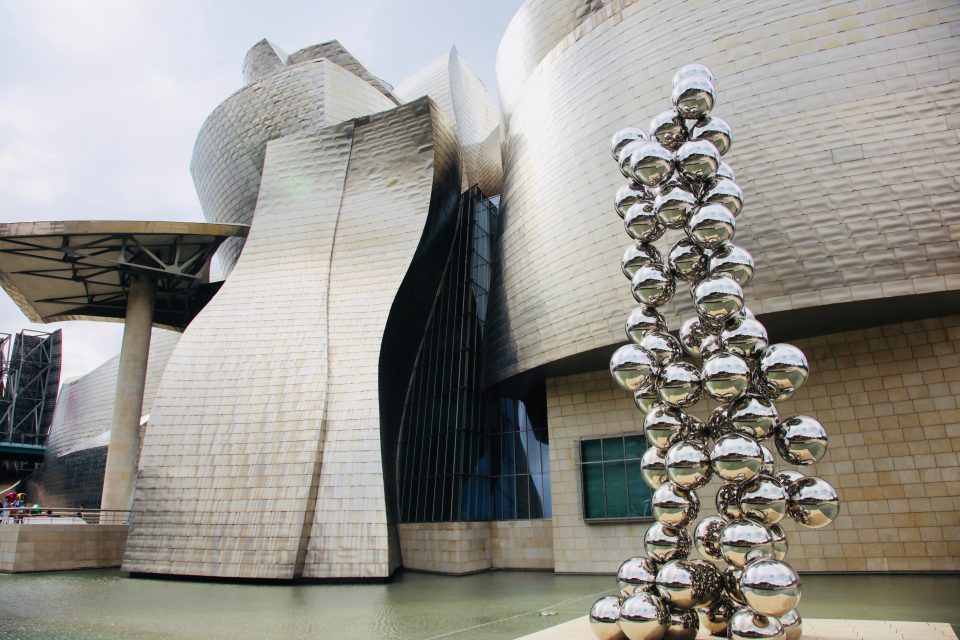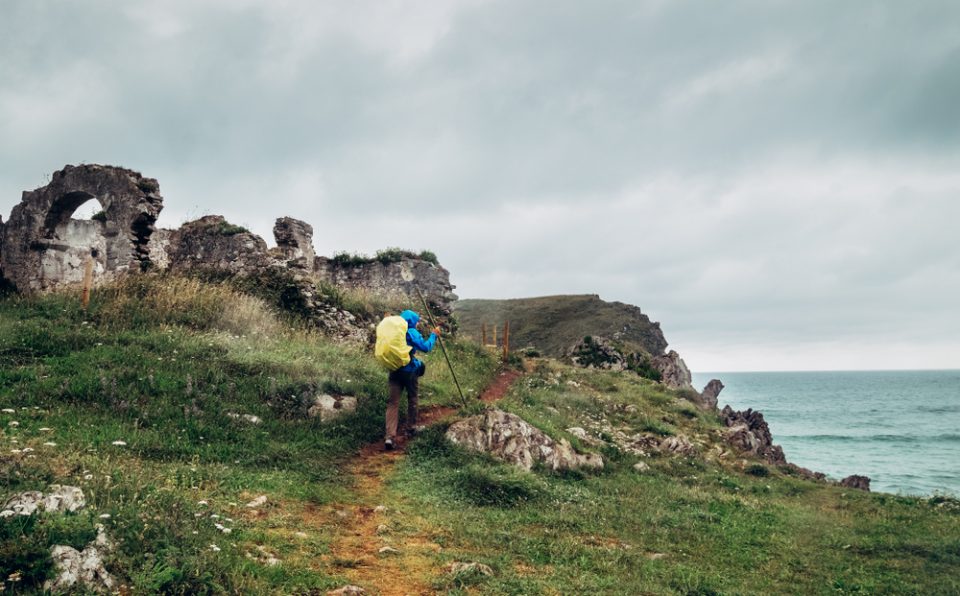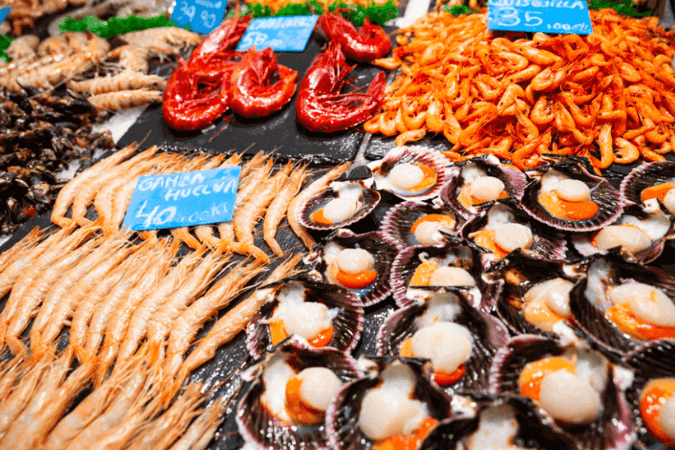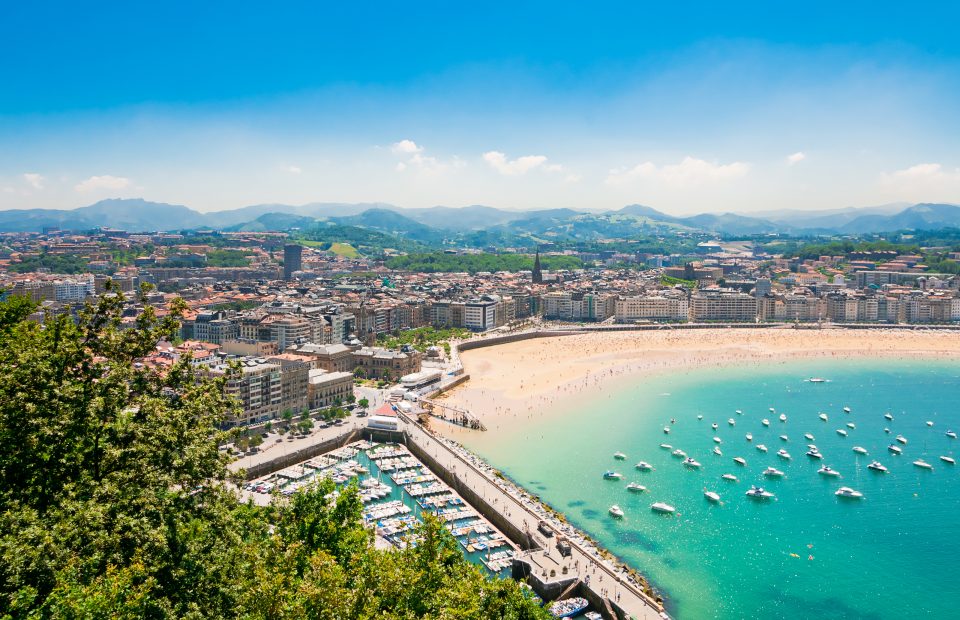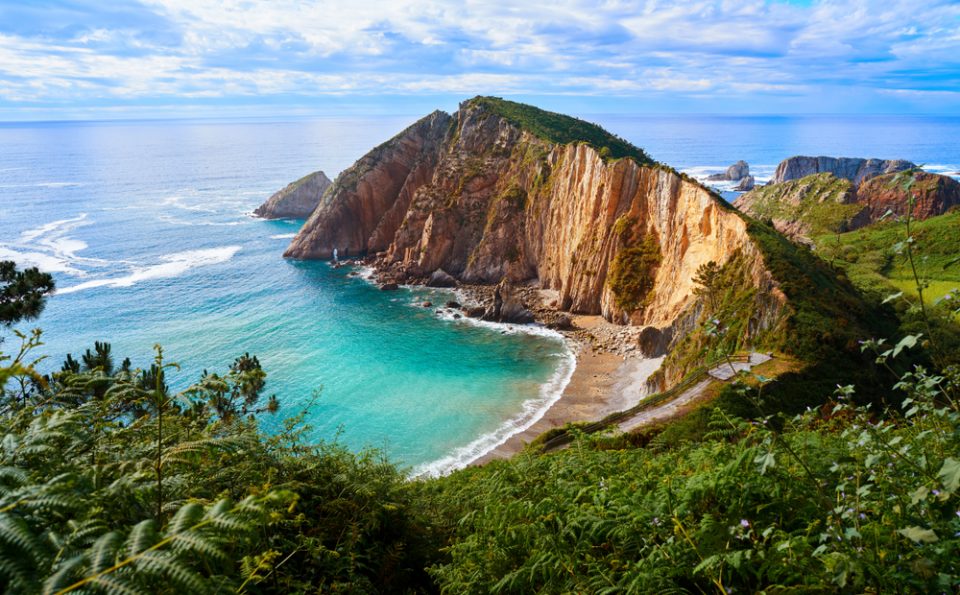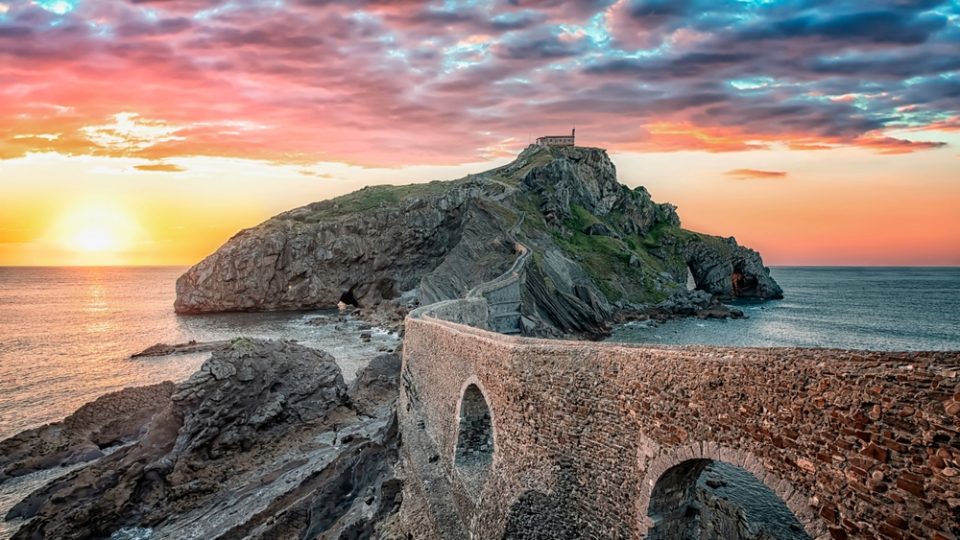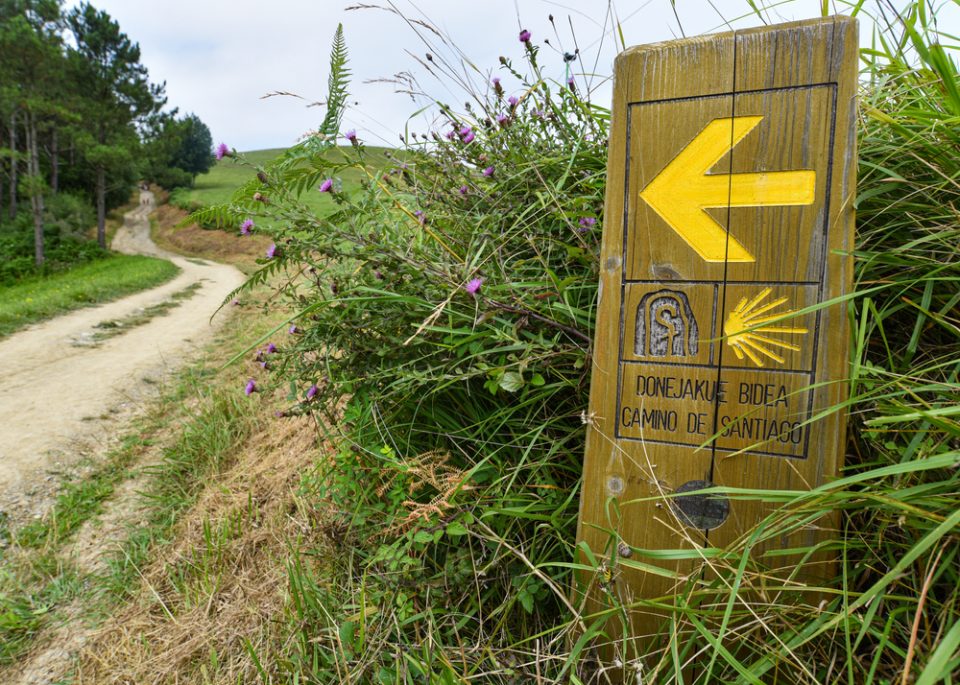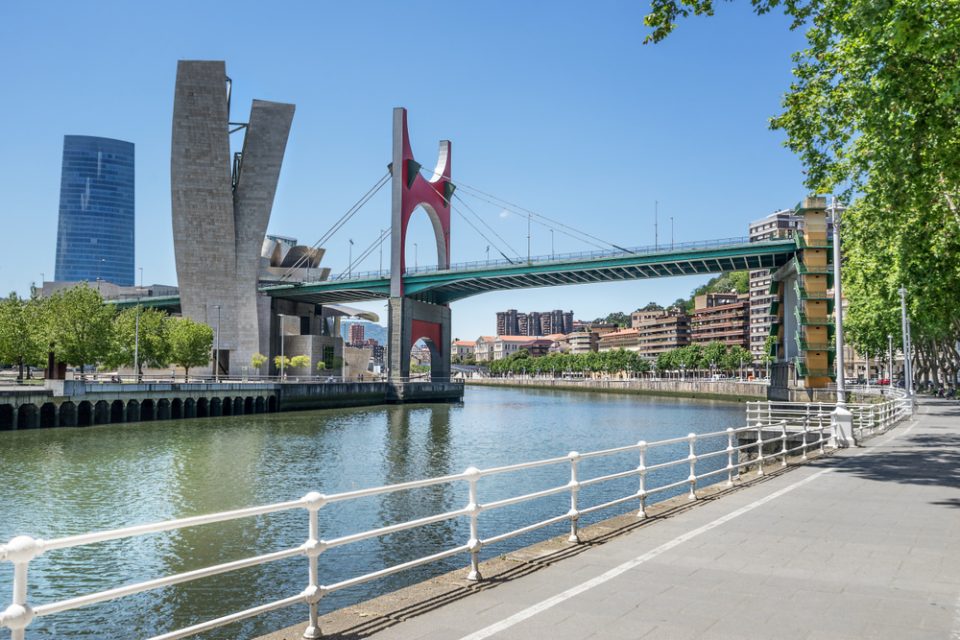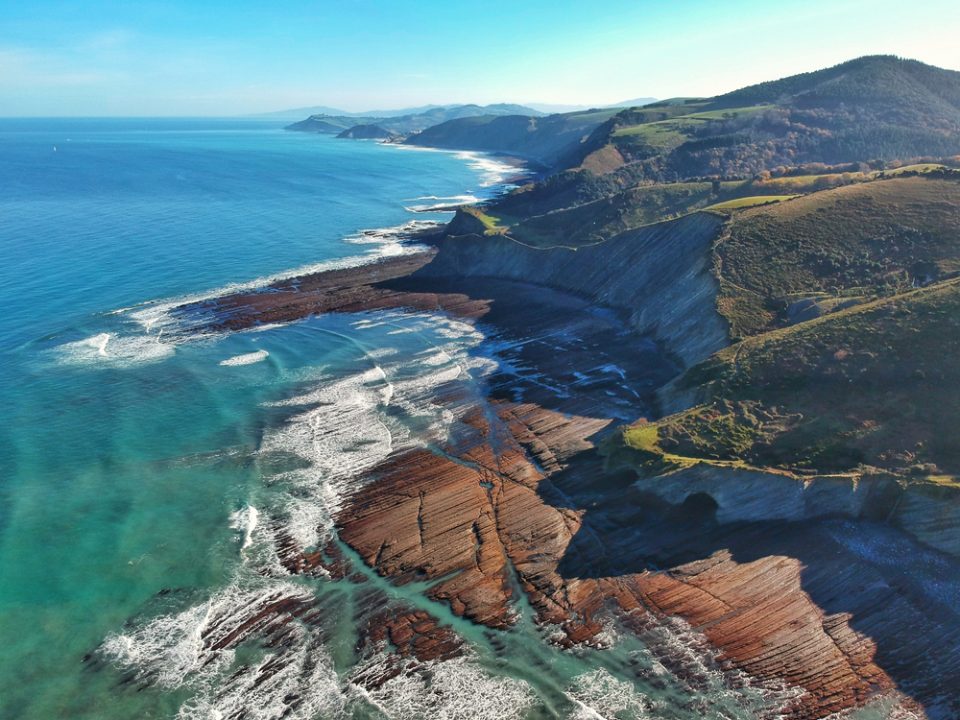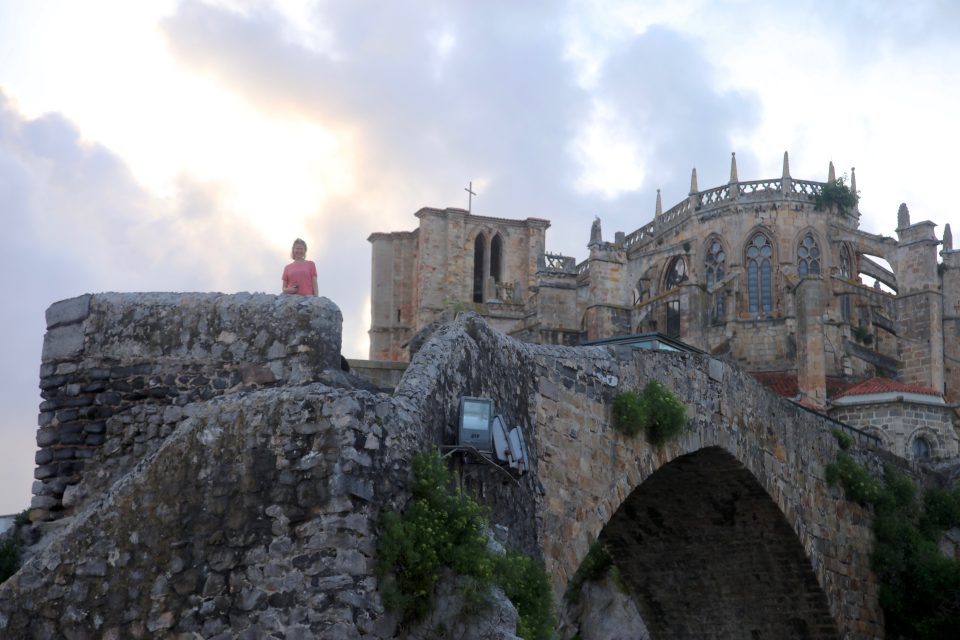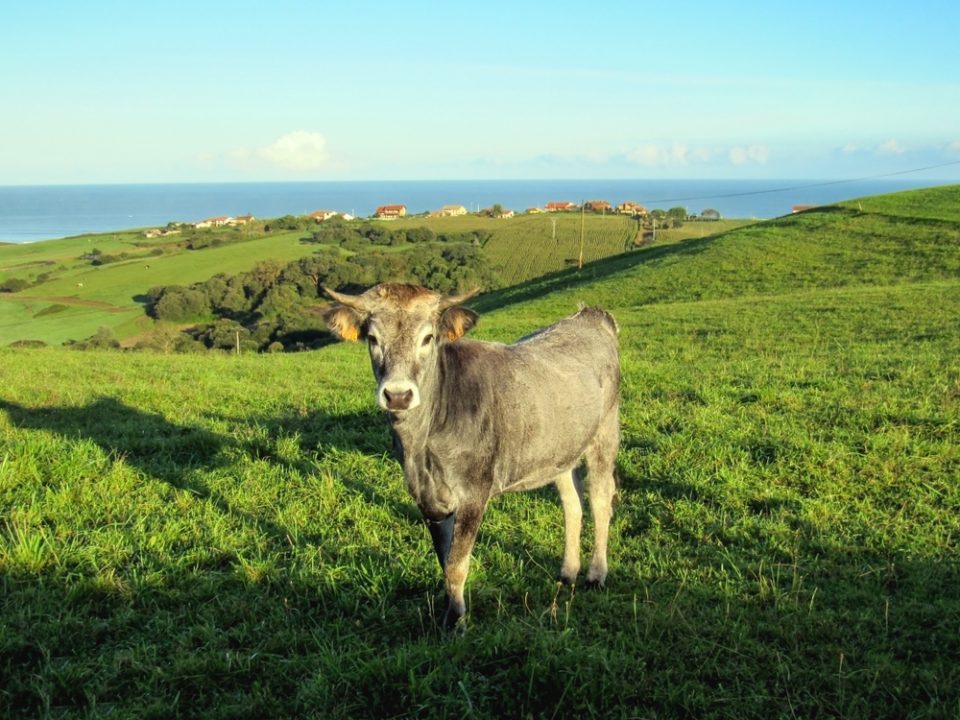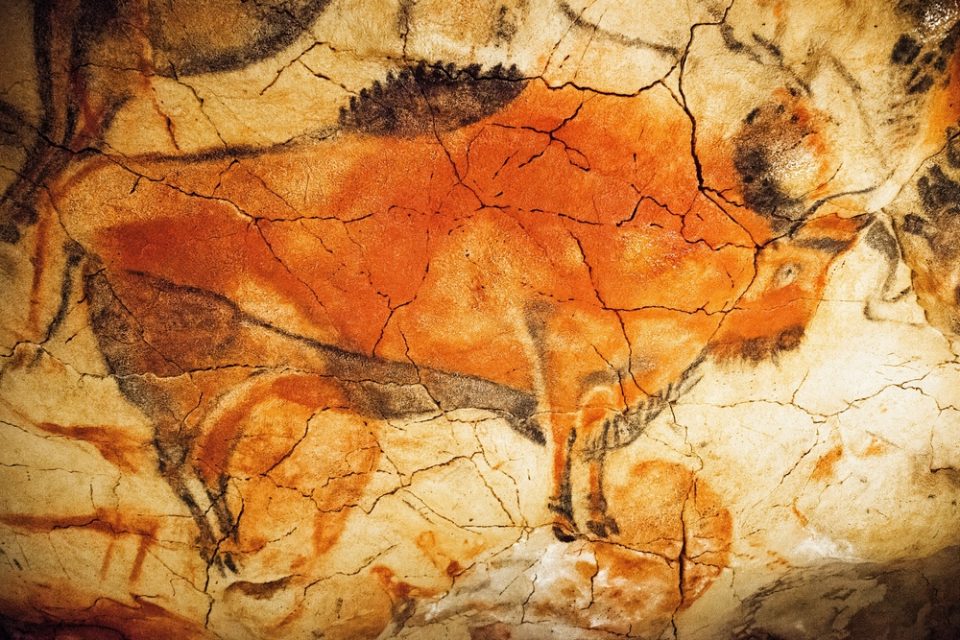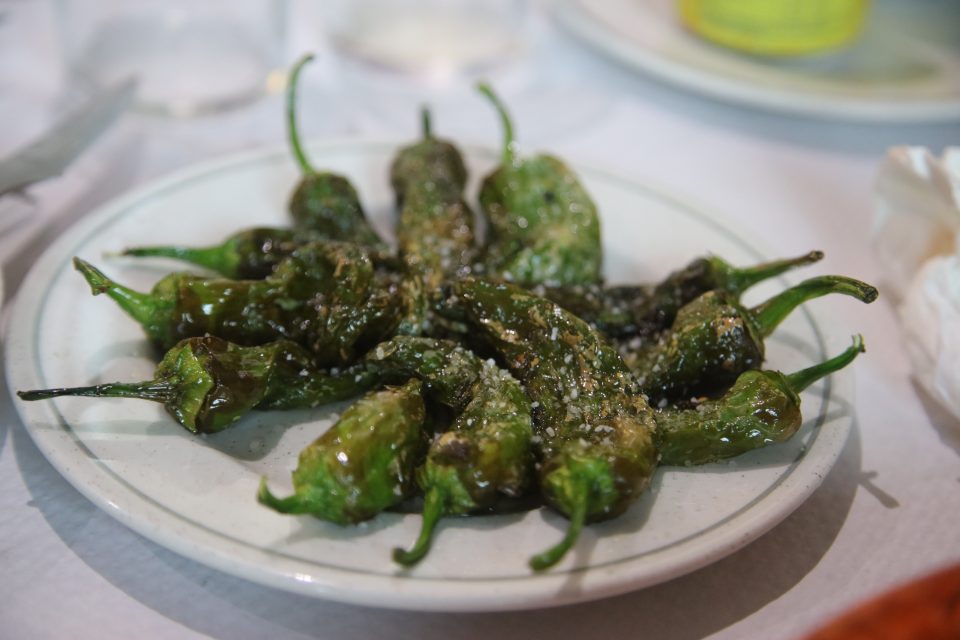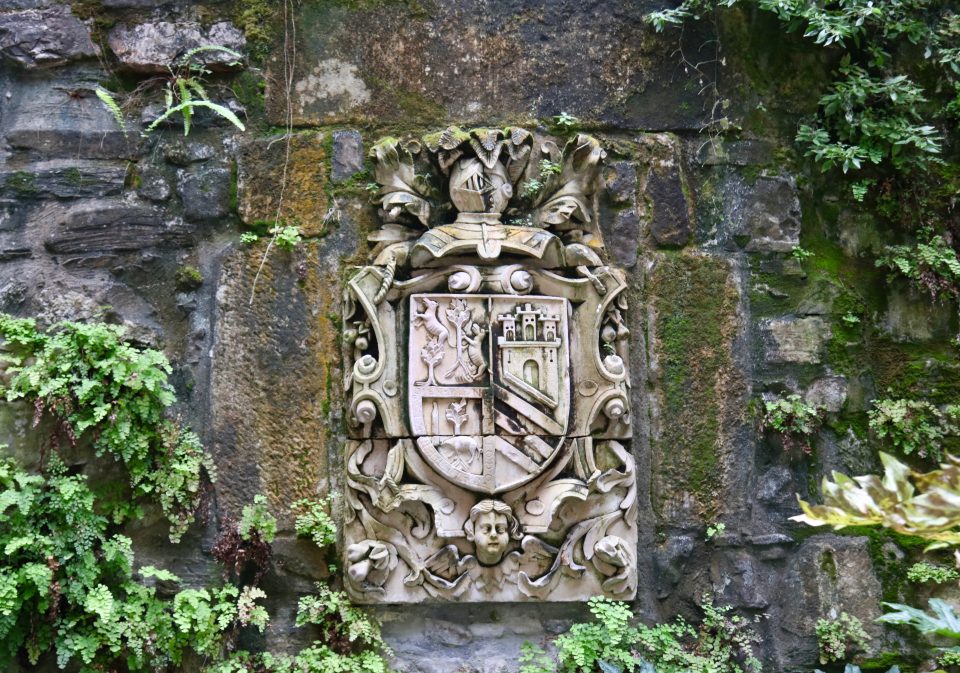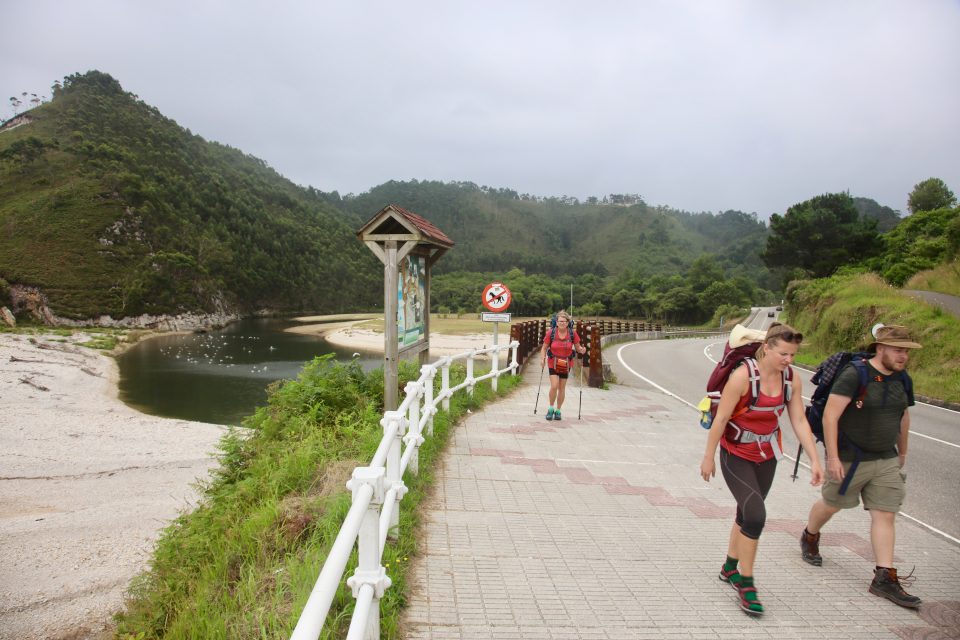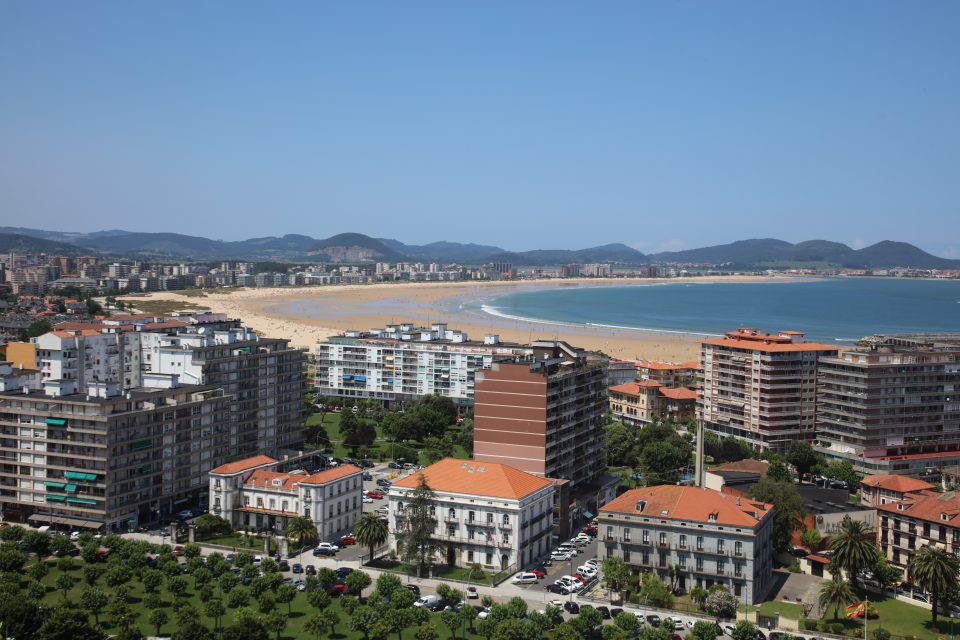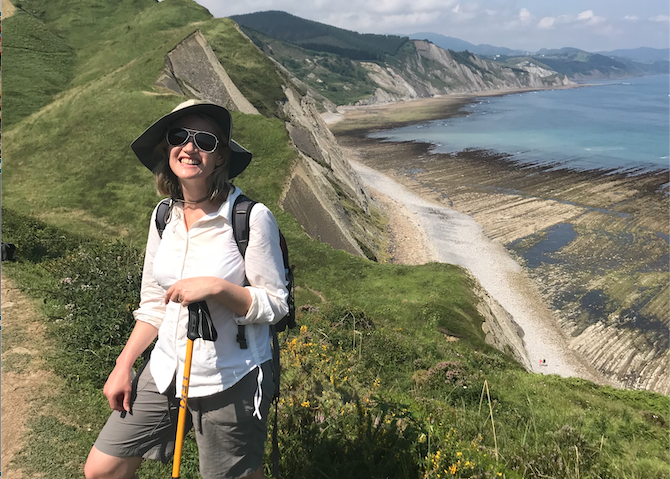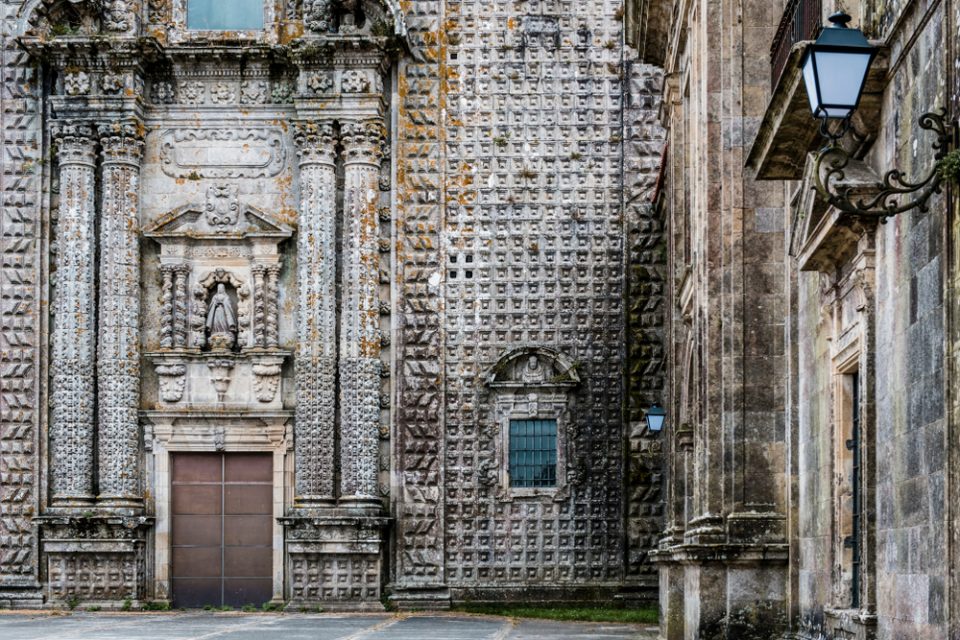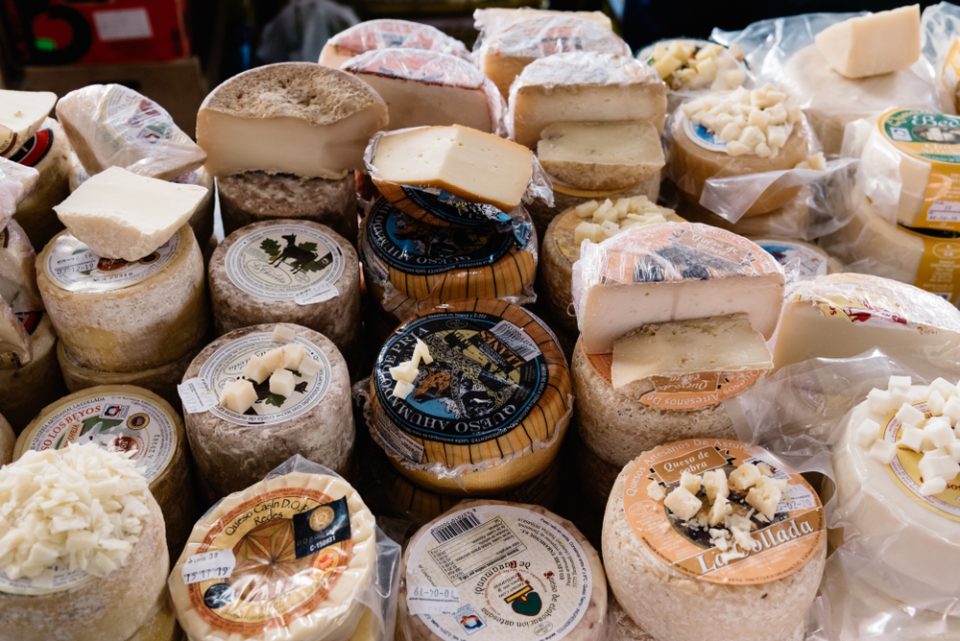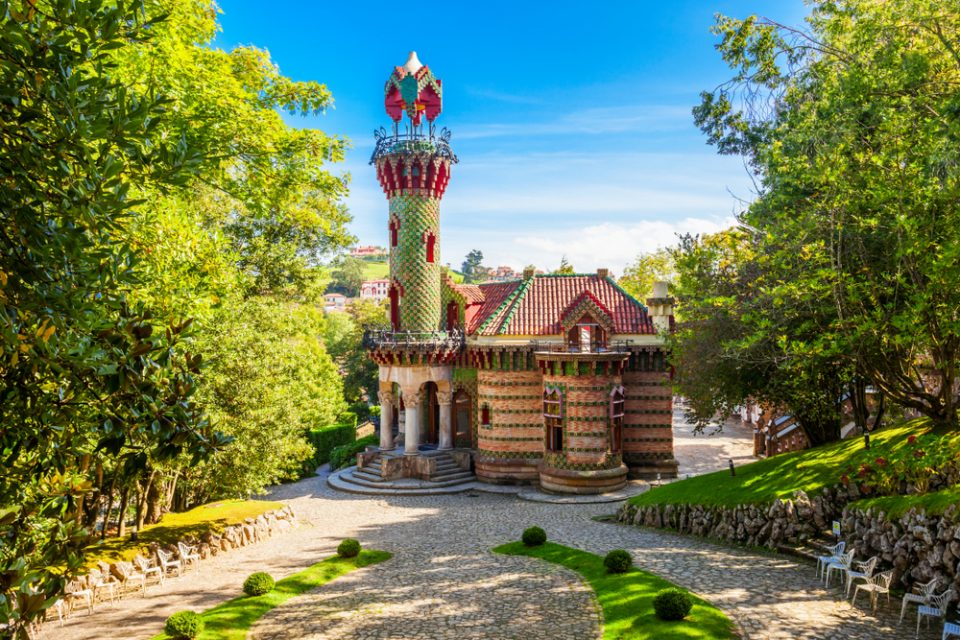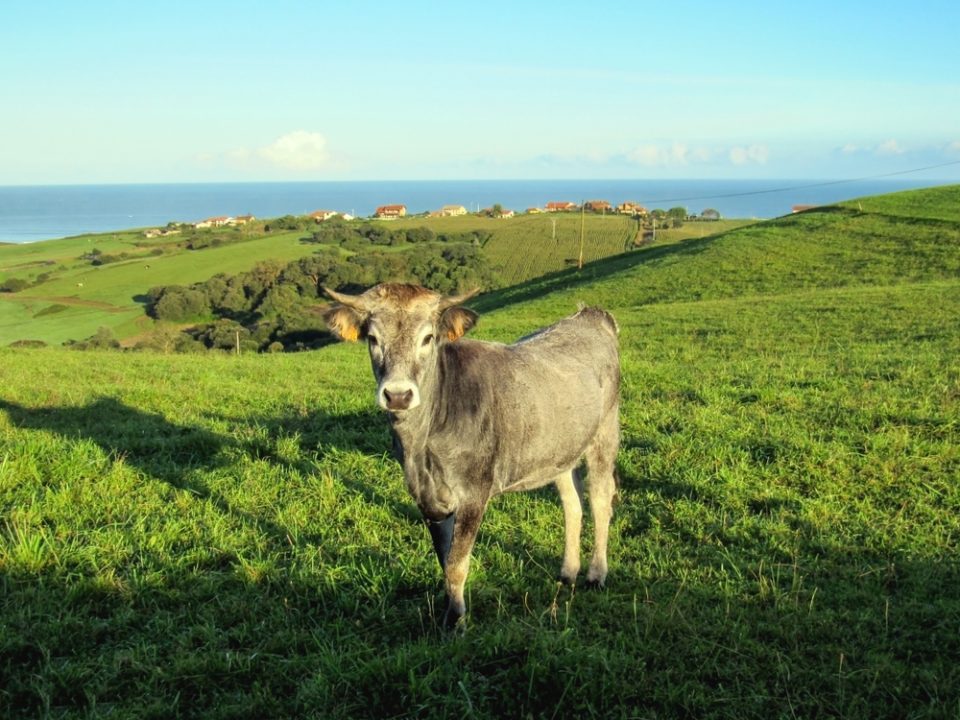length
43 Days
difficulty
Moderate - Challenging
trip cost
from $8595 pp
Nature Immersion
Cultural Interest

Highlights
Get Ready For
- Journey through the Basque, Cantabria, Asturias and Galicia regions of Spain
- Enjoy the distinct cuisine and local delicacies of each region
- Soak up the atmosphere in sophisticated San Sebastian
- Visit the world famous Guggenheim Museum in Bilbao
- Take time out at some of the many world famous beaches along the way
- Discover the rich and varied history, architecture, and diverse culture of each destination
Reviews
What our clients say

On the trail
What's it like underfoot
With far fewer pilgrims than the busier Camino Frances, in contrast the trails of the Camino Del Norte are much quieter and more peaceful. This route presents hikers with some physical challenges however – frequent and sometimes steep ascents and descents, rugged terrain and rough trails, and longer distances between towns or amenities. Scattered rural settlements and fishing villages are interspersed with busier port towns and some larger vibrant cities, with associated stretches of road walking and paved paths. At times alternative route options may be taken, although we usually advise keeping to the main marked Camino paths. There may be some options to take public transport in some places, which can help to reduce some of the longer hiking distances.
Itinerary
Daily Details
Make your own way to the coastal city of San Sebastian – one of Spain’s top tourist destinations. San Sebastian is famous for its stunning beaches and culinary scene and has more Michelin stars per square metre than any other city in the world, and it’s open air sculptures make the entire city feel like a work of art. After checking in your day is free to relax or explore the delights of this vibrant destination. A visit to the vibrant cobblestoned old town and Plaza de la Constitución is not to be missed, as are its two most famous beaches Playa de la Concha and Playa de Ondarreta and its picturesque bayfront promenade.
Follow the winding shoreline as you leave San Sebastian before the trail passes through green landscapes and rolling hills, offering nice glimpses over pretty valleys and meadows. You will pass the ancient Roman Church of San Martín de Tours with its weathered exterior. The pilgrimage continues past pretty coastal villages to finish in either Zarautz, famous for its whaling history and its long sandy beach, or the fishing village of Getaria. You may like to try the local Txakolí wine this evening.
Meals: B
Immerse yourself in the natural beauty of the Basque Country from Zarautz to Deba as the path winds its way through rolling hills, occasionally dipping back towards the coastline to reveal gorgeous sea views over the Bay of Biscay. Enjoy the unique charms and friendly locals in the villages you pass along the way. We recommend stopping to visit the Basque Coast Geopark famous for its geological flysch deposits, before your journey ends at Deba, a pleasant coastal town embraced by rugged cliffs. You may like to visit the gothic Iglesia de Santa Maria, which is recognised as one of the finest churches in this region.
Meals: B
The section from Deba to Markina leads pilgrims along the coastline before moving inland where there are some steep ascents to tackle. The tranquil route through the countryside offers coastal views and forested hills. Depending on what time of year you walk, enjoy vibrant wildflowers, lush vegetation and green rolling hills. There are numerous ancient stone bridges to cross where you can picnic and dip tired feet into cooling water before arriving into Markina-Xemein. The town boasts a rich historical heritage, with its medieval buildings and picturesque streets, and is also renowned for being the birthplace of numerous famous pelota champions.
Meals: B
Today the trail winds through rolling hills leading you through tiny Basque villages, each with their own unique charm. You will pass the medieval monastery at Zenarruza which holds a significant place in the region’s history. The monastery dates back to the 13th century and served as an important spiritual centre for pilgrims. Today’s section culminates at the historic town of Gernika (Basque spelling) immortalised by Picasso’s iconic painting, “Guernica,” which holds deep significance as a symbol of peace and resilience.The moving Museo de la Paz de Guernica is worth a visit for those interested in discovering more of the troubled history of the town during the Civil War period and is dedication to peace.
Meals: B
Leaving Gernika, the path ascends and descends through the gorgeous green landscape of the Biscay countryside. Enjoy the beauty of rolling hills, charming hamlets and small villages. Along the way the trail passes through pretty woodland forests of oak which provide the perfect spot for a picnic or rest. Marvel at the beauty and engineering ingenuity of the medieval bridges near Lezama where you should take the opportunity to explore the village, with its traditional houses, towers and winding streets.
Meals: B
The path from Lezama to Bilbao takes in several notable sites including the Romanesque Church of San Martin which stands testament to the region’s rich history and architectural heritage. The largely paved path today also passes the Tower of Malpica, an imposing medieval tower that once served as a defensive structure. As you approach Bilbao, the Basilica of Our Lady of Begoña stands proudly on a hilltop welcoming pilgims to the city. The magnificent basilica is a pilgrimage site dedicated to the Virgin Mary and offers breathtaking views. Entering the city you can enjoy the old-world blend of bustling markets and modern city life.
Meals: B
Enjoy a full day in Bilbao. Make sure you take time to visit this city’s most iconic attractions such as the Guggenheim Museum and the Fine Arts Museum, explore the riverside locales and the bustling Ribera Market, stroll the streets of the Plaza Nuevo and the fascinating old quarter known as Casco Viejo, and perhaps enjoy a boat trip along the river or funicular ride if time permits . Bilbao is also renowned for its cuisine and there are numerous fine restaurants and pintxo bars where you can sample the local delicacies. Slightly further afield you could make a side trip to visit spectacular San Juan de Gaztelugatxe – a tiny island with its stone bridge and steep staircase, made famous as the location of ‘Dragonstone Castle’ in the Game of Thrones. There is plenty to see and do in and around Bilbao – talk to us if you would like to extend your stay!
Meals: B
Today’s walk is largely through the urban landscape of Bilbao and across the Nervión River, with opportunities to enjoy the city and river views. There are various route options and paths you can take out of Bilbao. The UNESCO World Heritage Puente Colgante (Vizcaya Bridge) in Portugalete is remarkable and offers great views of the river below. If you have time and energy, enjoy a stroll along Portugalete’s waterfront promenade or ride the Puente Colgante, a unique experience that takes you across the river in a gondola suspended from the bridge.
NOTE: It is also possible to take a metro from Bilbao to Portugalete, for those who prefer to spend more time exploring Bilbao and wish to avoid walking through built up areas.
Meals: B
Today the trail follows the coastline passing some nice beaches with good views of the Bay of Biscay. The village of Ontón features the medieval church of Santa María de la Asunción Church with its impressive stone facade. The route to Pobena is relatively easy and you can break your journey at Playa de La Arena or Pobena with a coffee at one of the many cafes in the popular seaside town. Leaving Pobena behind the track mostly follows the coastline where there are most frequent ascents that will reward you with some fine coastal views. Continuing on to Onton the route then splits into two variants – the more scenic coastal route or the official inland route to Castro Urdiales. Castro Urdiales is surrounded by a spectacular landscape of steep cliffs and beautiful beaches. Take in the beautiful Santa María de la Asunción Church and striking Castillo de Santa Ana castle located right on the waterfront.
Meals: B
Experience a mix of gorgeous coastal scenery and historical landmarks including the Chapel of Santa Isabel and Church of La Magdalena en route to Liendo. The first part of today’s walk follows the coast to Islares where you have a choice of routes. The high route option involves steep ascents and descents and is more challenging but offers stunning views of the Cantabrian mountains and surrounding countryside. The coastal route is relatively flat with gentle terrain and minimal elevation changes allowing you to take in the beautiful seascape and enjoy the seaside villages.
Meals: B
Departing Laredo, take the ferry to Santona to begin the relatively easy stage of the walk to Noja. Santona is a historic fishing town renowned for its delicious seafood so stop for a bite to eat if you have the opportunity. From here the main route runs close to the shoreline for most of the way to Noja; if the weather is good it’s a great opportunity to take a swim in the Cantabrian Sea at either Playa de Berria or Playa de las Helgueras. There is also a protected wetland nature reserve that is home to a variety of flora and fauna including various migratory birds such as European Bee-eater and Eurasian Golden Oriole which migrates from Africa.
NOTE: It is also possible to take an alternative route from Laredo to Noja via Gama which is mostly inland and avoids the ferry crossing.
Meals: B
Today’s walk is long but enjoyable with plenty of gorgeous scenery to enjoy as you pass through the pretty inland towns of San Miguel de Meruelo and Bareyo. Take a rest break in Guemes before following the path to the coast and the last stage of the walk to Somo. Board a traditional Pedrenera ferry boat here for a unique arrival into Santander, with the incredible Gothic Catedral de Santander crafted between the 12th and 14th centuries, towering above.
Meals: B
Make the most of your free day in Santander by immersing yourself in this sophisticated city’s historical and culinary delights. The Palacio de la Magdalena is worth exploring, as is the gothic Catedral de Santander and the Museum of Modern and Contemporary Art (MAS). Located on the Cantabrian Sea, there are numerous beautiful beaches to enjoy in and around the city. The Bay of Santander is often described as one of the most beautiful bays in the world, and if weather permits a boat trip is an ideal way to explore the bay and its surrounds – durations range from 1 hour up to full day experiences. Foodies can indulge in sublime gastronomic experiences including Rabas, deep-fried squid rings, Marmita, a traditional fish stew or the exceptional anchovies that Santander is famous for.
Meals: B
A day of walking awaits as the Camino del Norte leaves Santander and its suburbs behind and heads inland. Once outside Santander’s city you will walk through suburbs such as Penacastillo and continue inland, often on paved paths, through the townships of Santa Cruz de Bezana and Mompia. Notice the change in the surrounding landscape as you near Boo de Pielagos and the Pas River. Take the time to rest and rejuvenate overnight in the small village of Puente Arce, nestled in the serene Cantabrian countryside – if you arrive early enough you may like to arrange a visit to the local award winning Siderit distillery. NOTE: It is possible to travel by public transport or taxi from Santander for part or all of today’s route, for those wishing to save time or to avoid walking through built up areas.
Meals: B
Today’s walk brings you to the atmospheric village of Santillana del Mar, one of the most captivating and picturesque villages on the Camino del Norte. Its mediaeval origins are evident in the well-preserved architecture that greets visitors. Pilgrims can visit the town’s Colegiata de Santa Juliana with its Romanesque cloisters. Revered by French philosopher and writer Jean-Paul Sartre as Spain’s most beautiful village, Santillana del Mar also holds close proximity to the renowned Altamira cave, a UNESCO World Heritage site famous for its prehistoric cave paintings.
Meals: B
Leaving Santillana behind, the route continues inland through Cantabria’s green rolling countryside dotted with farms, fields, forests and church towers. A highlight along the way is the colourful village of Cobreces, known for its picturesque setting. The notable Cistercian monastery, with its beautiful architecture and serene ambiance, is a testament to the area’s rich history and spiritual significance. After passing through Concha the trail arrives back to the coast near your destination for the day – Comillas. Comillas is known for its beautiful beach and for its unique architecture, including fine examples of art nouveau buildings. Don’t miss the opportunity to visit ‘El Capricho,’ a unique architectural gem designed by Antoni Gaudí, and commonly referred to as ‘Capricho de Gaudí’ or ‘Gaudí’s Caprice.’ This whimsical building showcases Gaudí’s distinctive style and creative genius.
Meals: B
Although lengthy, today’s walk is one of our favourites as it continues through the Cantabrian countryside. Leaving Comillas the route passes through the Oyambre Natural Park, which includes the San Vincente and Rabia estuaries. The park is a haven for biodiversity, hosting a rich variety of plant and animal species and a mosaic of habitats, including dunes, salt marshes, cliffs, beaches, meadows, and forests. Keep an eye out for the vibrant wildflowers, native grasses, and the lush vegetation that thrives in this coastal environment. There is also a wide range of migratory birds during spring and summer including Curlew, Osprey, European Goldfinch and the European Robin.
Meals: B
Leave Cantabria behind as you cross the Deva River into Asturias, a region steeped in rich historical significance. Asturias, a former nation and kingdom predating the modern state of Spain by 700 years and has its own distinct cultural identity. After passing through La Franca the walk today largely follows the wild and untamed coastline. There are plenty of opportunities to take in its breathtaking beauty as you hike the rugged coastal paths with the Picos de Europa alongside you.
Your destination is the fabulous port town of Llanes, one of Asturias most popular coastal destinations. The town has a long and fascinating history and, as well as its coastline and fine beaches, it is today renowned for its wealth of historic heritage sites, arts and crafts, and its fine gastronomy. This lively town boasts an enviable location with stunning beaches, cliffs and bays to one side and the Picos de Europa providing a backdrop.
Meals: B
Today enjoy a free day to immerse yourself in the delights of Llanes. There is plenty to discover including the remnants of the mediaeval city walls and circular tower, and numerous historic buildings including palaces, mansions and churches. Take some time to visit the marina and wander through the charming historic centre with its narrow streets, traditional houses, and vibrant atmosphere. Enjoy the beauty of its stunning beaches and breathtaking scenery – there are plenty of fine beaches to discover. Cuevas del Mar beach is a favourite and the San Pedro cliff top walk above the Playa del Sablon is recommended for its spectacular views. Don’t miss the opportunity to indulge in the mouth-watering array of local culinary experiences and savour the atmosphere of traditional Sidrerias (cider houses).
Meals: B
The mainly flat Camino trail today mostly follows Asturias’ beautiful Costa Verde, passing more sandy playas with occasional diversions inland through green forests and pretty countryside. Along the way, you will encounter scattered monasteries and charming villages such as Naves and Nueva where you may like to take the opportunity to relax and rejuvenate in one of the bars or cafes. Tiny Cuerres has traditionally been a rest stop for pilgrims, with its pilgrim’s fountain said to date from the 15th century. Finally you will arrive in Ribadesella, a coastal town located at the mouth of the Sella River, renowned for its rich history and picturesque sandy beaches. The little Ermita de la Virgen de Guia with its spectacular clifftop location is a most impressive site and gives the best views of the city. Take the opportunity to explore the town’s historic centre, enjoy a leisurely stroll along the promenade, and indulge in delicious cuisine – local specialities include a wide range of seafood and cheeses. You may like to visit the famous Palaeolithic cave art in the World Heritage listed Tito Bustillo cave and the nearby Tito Bustillo Cave Art Centre, although we suggest you contact them well in advance to check opening times and to book, in order to avoid disappointment.
Meals: B
The Camino briefly heads inland before returning to the coast, treating you to more fine ocean views, and past beaches and awe-inspiring cliffs. As you walk, you’ll have the opportunity to discover the renowned ‘Colunga coastline’, which is famously referred to as the Coast of Dinosaurs due to its significant discoveries of fossilised remains and ancient footprints. The surrounding scenery serves as a testament to the region’s rich geological history. The route heads inland from La Isla for the last 4 kms towards Colunga, your overnight destination. The town of Colunga is in an area known as ‘the heart of Asturias’, and provides a range of amenities and services to cater to weary pilgrims. You could take a visit to the popular Jurassic Museum of Asturias (MUJA), located a short distance out of town.
Meals: B
The day’s walk is pleasant and peaceful, featuring a few inclines and declines with the surrounding scenery offering a captivating blend of rural and mountain landscapes. The official Camino del Norte route is entirely inland on small paths and tracks with a few villages and limited facilities along the way, although you could choose to take a detour to Lastres, a charming fishing village nestled on a hillside overlooking the sea. Villaviciosa, or ‘town of vices’, where you will stay overnight is today a relaxed market town and is renowned for its apple crops and as a centre of cider production. The town is brimming with history dating back to Roman times with a captivating old town, characterised by its narrow streets, historic buildings, and a picturesque main square.
Meals: B
Depart from Villaviciosa along a relatively flat route for the first 4 kms to the village of Casquita, where the path splits and pilgrims who are walking the Camino Primitivo will turn towards Oviedo to continue their journey. Continuing on, the peaceful Camino del Norte route presents a physical yet rewarding challenge as you ascend 400m to the summit of Alto de la Cruz. The rugged beauty of the mountains, set against the backdrop of the Camino, creates an awe-inspiring memory. Descending almost as steeply as you ascended, enjoy some fine views as you continue hiking through the countryside and past the small settlements of Peon and Deva towards the coast and the port city of Gijon (Xixón), the largest city on the Costa Verde and in Asturias province. With approximately 3,000 years of fascinating history and an industrial past, Gijon today is a prosperous modern city on the Cantabrian Sea, known for its maritime pursuits, historical remnants, cheerful atmosphere, and its fine shopping and excellent cuisine.
Meals: B
Today you have a full day at leisure to explore Gijon. Discover the charming old fisherman’s quarter known as Cimavilla. Stroll through its narrow streets, immerse yourself in the historic atmosphere, and marvel at the traditional architecture. Visit San Lorenzo Beach and explore the Plaza Mayor and the Campo Valdes area, with its historic palace and Roman Baths. If time allows, stop at one of Gijon’s interesting museums or galleries before sampling some local dishes, such as fabada Asturiana, a hearty bean stew. Don’t miss the opportunity to try the region’s famous cider and fresh seafood or satisfy your sweet tooth with traditional Asturian desserts like rice pudding (Arroz con Leche). Another delicious treat is the Pantortilla, a traditional Asturian dessert made with eggs, sugar, and lemon zest. For travellers with energy to explore further afield, it may be possible to make an optional day trip to the spectacular Covadonga Lakes, part of the wild Picos de Europa National Park area.
Meals: B
Today, you will experience a mix of urban and industrial landscapes before the trail gradually transitions from highways and roads to scenic pathways. You will walk on a combination of footpaths, roads, and hard compacted dirt, so be mindful of your feet on the harder surfaces. Hikers may choose to take a local bus to Camino Rebesou or local taxi to Monte Areo Park, to avoid walking through the city’s urban sprawl.
Avilés is renowned for its shipbuilding past, historical heritage and well-preserved old town. Don’t miss the opportunity to visit two noteworthy attractions: the Oscar Niemeyer International Cultural Centre, an architectural masterpiece designed by the Brazilian architect Oscar Niemeyer, and the Iglesia de Santo Tomás de Cantorbery (Church of Saint Thomas of Canterbury), an important religious site in Avilés. This church is a splendid example of Gothic architecture dating back to the 13th century.
Meals: B
Enjoy a lovely day of mostly inland walking, with just a short section near the coast as you pass Salinas. Passing the village of San Cristobel the trail continues through some sections of woodlands and tree lined paths before crossing the medieval bridge into El Castillo de San Martin. Continuing further along, San Esteban de Pravia is situated by the Nalón River and provides a nice place for a picnic. In El Pito visit San Salvador Chapel, the “Cathedral of Asturias” which features intricate stonework and a beautiful rose window. Another landmark worth visiting is El Pito is the Palacio de Selgas, a grand neoclassical palace surrounded by lush gardens. If you are not too tired, treat yourself to dinner in the coastal town of Cudillero, located nearby, showcasing fresh seafood as well as other regional specialties like Cachopo (breaded and stuffed veal) and Asturian cheeses.
Meals: B
After a few days of largely inland walking, you can also appreciate some views of the coastline as you hike the hilly terrain towards Cadavéu. The beautiful Concha de Artedo beach offers an opportunity to relax and soak your tired feet. Take time to enjoy the spectacular coastal landscapes nearby Castanares, including the rugged Playa del Silencio. Your destination is Cadavéu, known for its well-preserved architecture and historical significance as a medieval whaling port—one of the oldest villages in Asturias and previously acclaimed as the most beautiful village in the province.
Meals: B
Before starting your hike, don’t miss the opportunity to take a dip at Playa de Cadavéu. Enjoy a leisurely day’s walk with some hills and coastal scenery interspersed with stretches of green countryside. Along the way, you’ll also encounter numerous traditional horreos, cherished as significant cultural relics. The fishing town of Luarca, or ‘White town of the Green Coast’, is situated at the mouth of the Rio Negro. The busy town is known for its beautiful harbour lined with colourful fishing boats, and its setting surrounded by green hills. Its traditional maritime character is evident with its narrow streets, whitewashed houses, and traditional buildings of the ‘Fisherman’s Quarter’. Strolling through the streets, you can explore the local shops, cafes, and restaurants that showcase the region’s delicious seafood cuisine. Seven bridges span the river with the Puente del Beso (Bridge of the Kiss) being the most famous, due to the famous legend that gave the bridge its name.
Meals: B
Today, the trail leads inland, passing through rolling hills, shaded forests, and some meadows. After a climb out of Luarca, the gently undulating terrain allows you to fully immerse yourself in the tranquil countryside. Navia sits next to the Navia River, from which the town derives its name and serves as a backdrop to the town. Food enthusiasts will be delighted by the culinary offering which often features mouthwatering seafood dishes such as scallops and octopus, known as Pulpo.
Meals: B
Hopefully you are well-rested and ready to embark on this long walking day, although most hikers find it not too physically challenging, due to its more gentle terrain. Today’s journey holds special significance as it marks your final day following the coastline, before the trail turns inland for good as the Camino del Norte heads towards Santiago de Compostela. A memorable feature today as you arrive into Ribadeo is the Bridge of the Saints or Puente de los Santos, which spans the Eo River and marks the border between Asturias and Galicia.
Meals: B
Today is free to explore Ribadeo and its surroundings. Definitely don’t miss a visit to the famous Praia das Catedrais (Playa de las Catedrales – Cathedrals Beach) located a short distance from the city. This stunning beach is renowned for its impressive rock formations and natural arches, which resemble the grandeur of cathedral interiors!
Within the town, the Historical Quarter, the fascinating Barrio de San Roque and the area surrounding the Playa del Espana with its variety of architectural styles, are all worth exploring. Ribadeo is a great place for an introduction to Galician cuisine. Of course seafood is in abundance with octopus, lobster and squid amongst the dishes on offer – a tasting menu is a great way to sample a wide range of local dishes.
Meals: B
A bittersweet day as we leave Ribadeo and the coastline behind and turn inland towards the green Galician hills. You will notice the changes in scenery, as the route is largely rural with forests of eucalyptus trees with their familiar scent. The quiet path climbs uphill through sleepy hamlets and villages, so make sure you carry food with you in case there are no shops available to purchase food. In Lourenza marvel at the impressive Monastery of San Salvador, a 10th-century Benedictine monastery that stands at the entrance of the town. This medieval monastery is renowned for its architectural beauty and religious significance, attracting visitors from near and far.
Meals: B
The terrain through this section of the trail features some notable inclines and descents to contend with; however you will be rewarded with beautiful views and an ever-changing landscape and peaceful surroundings. This area of Galicia is known for its dairy and agricultural products like honey, chestnuts, and traditional Galician liqueurs which are made from local fruits and herbs. Take time for a break and to visit the impressive 13th century cathedral as you pass through historic Mondonedo, as the following 11.5km is an uphill hike to your overnight destination, Abadin.
Meals: B
The trail between Abadín and Vilalba features gently undulating terrain as it winds its way through scenic wooded countryside and peaceful farmland, crossing some minor rivers and streams en route. There are several tiny villages that offer rest stops for pilgrims, however amenities are limited so it’s always a good idea to be prepared and carry snacks.
There are several attractions and activities to explore in Vilalba city, including its castle and a medieval fortress offering panoramic views of the town and surroundings. Make sure you take a stroll through the historic centre, where you can visit the Santa María de Vilalba Church and explore the narrow streets filled with shops and cafes. Don’t forget to try local delicacies such as empanadas (savoury pies), the famous Galician beef and local cheeses.
Meals: B
The trail winds its way through flat fertile farmland called “Terra Cha”, which translates as ‘flat’ or ‘plain’ land and is an accurate description of today’s landscape. Along the way you will pass through several small and charming villages and some tiny churches which are worthwhile visiting.
Meals: B
The route today is again relatively easy, with mainly flat terrain and some gentle inclines. You can enjoy the scenic Galician countryside as you stroll towards Miraz, a small rural village that offers a glimpse into the local history and culture of the area. Don’t forget to visit the small church of Santa Maria de Miraz (Church of Santa Maria) and the Capilla de San Alberte (Chapel of San Alberte), both built in traditional Galician architectural style usually characterised by the use of stone. Afterward, you will be transferred to your overnight accommodation.
Meals: B
Immerse yourself in the ambiance of rural Galicia as you follow the Camino del Norte’s trails through fields, meadows, and pretty wooded stretches as you ascend steadily to A Roxica and then onto Marcela, the highest point of this section at 710m. Enjoy panoramic views of the surrounding countryside from Alto de Vilar before taking a moment to pause and reflect on your accomplishments on your Camino pilgrimage. You soon arrive at the captivating village of Sobrado dos Monxes renowned for its monastery built in the 10th century. Explore the village at your leisure taking in the traditional stone houses, local shops and restaurants.
Meals: B
A truly significant day, as today is your last day hiking on the quieter Camino del Norte before it merges with the Camino Francés just before Arzúa. Arzúa is a vibrant town that serves as a welcoming hub for pilgrims. You will notice the increase in pilgrim activity, providing you with a unique opportunity to engage with your fellow pilgrims and share stories as you come together. For foodies, be sure to try Arzúa’s famous cheese, “Queso de Arzúa-Ulloa” – it is delicious!
Meals: B
Today’s route will be noticeably busier as the Camino del Norte has now merged with the main Camino Frances trail, so you will be joined on the trail by many pilgrims walking the final days of their pilgrimage journeys into Santiago de Compostela. The majority of today’s walk to O Pedrouzo is through wonderful pine and eucalyptus scented woodland. The path is mostly level, passing through three shallow river valleys with a gradual climb up to Alto de Santa Irene at 404m. The country lanes and woodland paths pass through many small hamlets. The final section climbs steeply to a main road, into eucalyptus woodland and onto A Rua and the village to O Pedrouzo. O Pedrouzo /Arco do Pino is a small but busy town with plenty of shops, restaurants and bars and the staging point for the last section of the Camino before entering Santiago de Compostela.
Meals: B
Today begins the last stage of your journey to Santiago. The pilgrims mass at Santiago Cathedral begins at midday so we recommend leaving early to arrive on time. The first section of today’s route passes through eucalypt forests with most of the route on quiet roads and pathways before the final kilometres and a climb to Mount Gozo before descending into the suburbs of Santiago. The path runs alongside the airport and you will see many crosses of twigs and branches used by pilgrims to decorate the fence. Lavacolla village is where pilgrims traditionally wash to purify themselves before entering Santiago, and Lavacolla literally means to wash your tail. At Monte do Gozo, Mount of Joy, you will first sight the stunning Catedral de Santiago spires. The final section is well signposted into the old quarter with its wonderful historical buildings and narrow shop filled alleyways, until you finally reach the Praza Obradoiro in the heart of Santiago de Compostela, and the wonderful ancient Cathedral.
Meals: B
Today you have the whole day to enjoy and explore historic Santiago de Compostela with its many enticing tapas bars and restaurants. You can attend the midday pilgrims mass and look around the famous Cathedral of St James which forms the city’s heart and watch the steady stream of excited pilgrims arriving into the square as they finish their epic journey. Alternatively you may like to take a day trip out to visit Finisterre, the ‘end of the world’ or a shorter rooftop tour of Santiago, both of which can easily be arranged locally.
Meals: B
You are free to check out of your hotel any time before 10am. If you would like to explore Santiago further you are able to leave your bags with reception.
Meals: B
Map
Explore
San Sebastián
This coastal city is one of Spain’s top tourist destinations, famous for its stunning beaches and culinary scene. It has more Michelin stars per square metre than any other city in the world! The open air sculptures make the entire city feel like a work of art.
CLICK ON A PIN TO REVEAL INFORMATION ABOUT THAT LOCATION
Zarautz
This town has an excellent beach with an atmospherice historic quarter. The local cuisine is one of the most exquisite and famous in the whole Basque Country.
Deba
Deba is a pleasant coastal town embraced by rugged cliffs. The gothic Iglesia de Santa Maria is recognised as one of the finest churches in this region.
Markina-Xemein
This town boasts a rich historical heritage, with its medieval buildings and picturesque streets. It is also renowned for being the birthplace of numerous famous champions of poleta (a game similar to squash).
Gernika
The historic town of Gernika was immortalised by Picasso’s iconic painting “Guernica,” which holds deep significance as a symbol of peace and resilience. At the Museo de la Paz de Guernica you can learn about the troubled history of the town during the Civil War period and is dedication to peace.
Bilbao
Bilbao is a popular rest day for pilgrims as there is plenty to see and do. The city’s most iconic attractions are the Guggenheim Museum and the Fine Arts Museum, and there are numerous fine restaurants and pintxo bars where you can sample the local delicacies. From Bilbao, you can make a side trip to San Juan de Gaztelugatxe – a tiny island with a stone bridge made famous in Game of Thrones.
Portugalete
The UNESCO World Heritage Puente Colgante (Vizcaya Bridge) in Portugalete is remarkable and offers great views of the river below. Enjoy a stroll along Portugalete’s waterfront promenade or ride the Puente Colgante, a unique experience that takes you across the river in a gondola suspended from the bridge.
Castro Urdiales
Castro Urdiales is surrounded by a spectacular landscape of steep cliffs and beautiful beaches. Take in the beautiful Santa María de la Asunción Church and striking Castillo de Santa Ana castle located right on the waterfront.
Laredo
As you approach Laredo on the Camino del Norte, you’ll be greeted by the sight of its long, sandy beach, Playa de La Salve, which stretches for miles along the bay. The golden sands and azure waters provide a soothing backdrop to the town, and it’s not uncommon to see pilgrims taking a well-deserved rest along the shore.
Santander
This coastal jewel on the Camino del Norte exudes sophistication, elegance and charm. The Bay of Santander is often described as one of the most beautiful bays in the World! Indulge in sublime gastronomic experiences and visit the gothic Catedral de Santander and the Museum of Modern and Contemporary Art.
Puenta Arce
This small village is nestled in the serene Cantabrian countryside. If you arrive early enough you may like to arrange a visit to the local award winning Siderit distillery.
Santillana del Mar
This atmospheric village is one of the most captivating and picturesque villages on the Camino del Norte. Its mediaeval origins are evident in the well-preserved architecture that greets visitors. Nearby is the renowned Altamira cave, a UNESCO World Heritage site famous for its prehistoric cave paintings.
Comillas
Comillas is known for its beautiful beach and for its unique architecture, including fine examples of art nouveau buildings. ‘El Capricho,’ showcases Anton Gaudí’s distinctive style and creative genius.
Oyambre Natural Park
The Camino del Norte route passes through this biodiverse park, one of Cantabria’s most enchanting settings. Vibrant wildflowers and native grasses thrives in this coastal environment. There is also a wide range of migratory birds during spring and summer including curlew, osprey, European goldfinch and the European robin.
Llanes
This port town is one of the most popular coastal destinations in Asturias, offering a wealth of historic heritage sites, arts and crafts, and fine gastronomy. There are plenty of fine beaches to discover. Cuevas del Mar beach is a favourite and the San Pedro cliff top walk above the Playa del Sablon has spectacular views.
Ribadesella
This coastal town located at the mouth of the Sella River has a rich history and picturesque sandy beaches. The little Ermita de la Virgen de Guia with its spectacular clifftop location is a most impressive site and gives the best views of the city.
Colunga
The town of Colunga is in the heart of Asturias and provides a range of amenities and services to cater to weary pilgrims. The coastline here is famously referred to as the Coast of Dinosaurs due to its significant discoveries of fossilised remains and ancient footprints.
Villaviciosa
The ‘town of vices’ is a relaxed market town, known for its apple crops and as a centre of cider production. The town is brimming with history dating back to Roman times with a captivating old town, characterised by its narrow streets, historic buildings, and a picturesque main square.
Gijón
The port city of Gijon (Xixón) is the largest city on the Costa Verde and in Asturias province. It is a prosperous modern city on the Cantabrian Sea, known for its maritime pursuits, historical remnants, cheerful atmosphere, and its fine shopping and excellent cuisine. From here, you can make a day trip to the spectacular Covadonga Lakes, part of the wild Picos de Europa National Park area.
Avilés
With its shipbuilding past, historical heritage and well-preserved old town, there is plenty to see and do. The Iglesia de Santo Tomás de Cantorbery (Church of Saint Thomas of Canterbury) is an important religious site in Avilés. This church is a splendid example of Gothic architecture dating back to the 13th century.
El Pito
Notable landmarks in this town include the San Salvador Chapel, which features intricate stonework and a beautiful rose window, and the Palacio de Selgas, a grand neoclassical palace surrounded by lush gardens. Nearby is the coastal town of Cudillero, which showcases fresh seafood as well as other regional specialties like Cachopo (breaded and stuffed veal) and Asturian cheeses.
Ballota
The small and picturesque village of Ballota has traditional Asturian houses and a peaceful ambiance. It’s an ideal spot to unwind and enjoy the tranquillity of the coastal setting.
Luarca
The busy fishing town of Luarca – ‘White town of the Green Coast’– is known for its beautiful harbour lined with colourful fishing boats, and its setting surrounded by green hills. Its traditional maritime character is evident with its narrow streets, whitewashed houses, and traditional buildings of the ‘Fisherman’s Quarter’.
Navia
Navia sits next to the Navia River, from which the town derives its name and serves as a backdrop to the town. The culinary offerings include mouthwatering seafood dishes such as scallops and octopus (pulpo).
Ribadeo
As you arrive into Ribadeo, you’ll see the Bridge of the Saints or Puente de los Santos, which spans the Eo River and marks the border between Asturias and Galicia. Ribadeo is a great place for an introduction to Galician cuisine. A short distance from the city is Praia das Catedrais, a stunning beach famous for its impressive rock formations and natural arches, which resemble the grandeur of cathedral interiors!
Lourenzá
The impressive Monastery of San Salvador stands at the entrance to Lourenzá, The picturesque old town has cobbled streets, stone houses, and quaint squares.
Abadín
Abadín is surrounded by the scenic Galician countryside, with rolling green hills, meadows, and forests It may not be as well-known as some of the larger cities in Galicia, but its quiet beauty and historical character make it a delightful stop.
Vilalba
The city of Vilalba has a castle and medieval fortress offering panoramic views of the town and surroundings. In the historic centre you can visit the Santa María de Vilalba Church and explore the narrow streets filled with shops and cafes. Local delicacies include empanadas (savoury pies), famous Galician beef, and local cheeses.
Baamonde
The Camino del Norte passes through the small rural village of Baamonde, which is surrounded by farms and agricultural land, and about 100km from Santiago de Compostela.
Sobrado dos Monxes
This captivating village is known for its monastery built in the 10th century. It is an imposing building of large dimensions and baroque style.
Arzúa
This is the last large town before you reach Santiago. It has plenty of restaurants bars and cafes and a few ATMs. The 14th century Capilla de la Magdelena is the town’s main monument. Arzúa is most famous for its local cheese, Queixo, a smooth creamy cheese made from cow’s milk which most restaurants feature in some way and is definitely worth trying.
O Pedrouzo
This small busy town has plenty of shops, restaurants and bars. It is the last stage of the Camino before entering Santiago de Compostela.
Santiago de Compostela
The wonderful and historic city of Santiago is the end of the Camino journey for most pilgrims. Praza do Obradoiro and the wonderful ancient Cathedral form the city’s heart. Attend the midday pilgrims mass and watch the steady stream of pilgrims arriving into the square as they finish their epic journey. There are many enticing tapas bars and restaurants in which to celebrate your journey.
Inclusions
What's included?
- 42 nights accommodation including hotels, small guesthouses and country houses, on a double/twin share basis
- Daily breakfast
- Luggage transfer each day from hotel to hotel (1 x <18kg bag per person)
- Use of RAW Travel navigation APP during your Camino, with maps of your hotel locations and emergency contact numbers
- Local and Australian emergency contact numbers
- Dedicated local support person in Spain
- Single supplement
- Solo Traveller surcharge if applicable for luggage transfers
- Peak season surcharge if applicable at time of booking
- Lunches and dinners
- Local buses, trains, boats or taxis if needed
- Flights
- Train tickets
- Travel insurance
- Guidebook and phrasebook
- Arrival or departure transfers

Navigation
Finding your way
Finding your way along the trail has become a lot easier with our exclusive APP, which has all your trip information and route guidance in one handy place. You still need to be self-reliant with wayfinding. For the best results, use a combination of road and trail signs, a backup paper map or guidebook, and our app. Knowing the daily distances, elevation changes and notable landmarks will enhance your navigation. Our app can pinpoint and confirm whether you’re still on the correct trail. Like with any phone app, it’s not intended to be used constantly as you walk. Read more about all the great features of the app and how to use it for navigation.
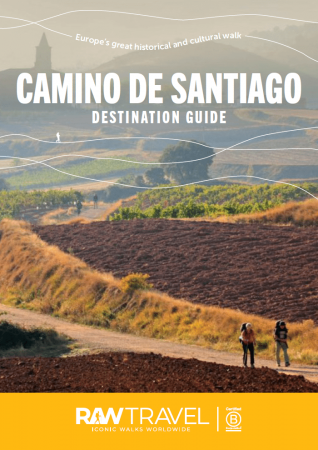
Exclusive Guide
Camino de Santiago
Walking the Camino is an incredible journey that will immerse you not only in Europe’s grand history, food and culture but most importantly the extraordinary camaraderie that exists along these routes. The spirit of the Camino de Santiago is alive and well among people from all over the world. It is a bucket list experience you will never forget! Discover inspiration, travel essentials, practical information and more in our free Destination Guide. All you need to know about walking the Camino de Santiago routes through Spain, Portugal and France!
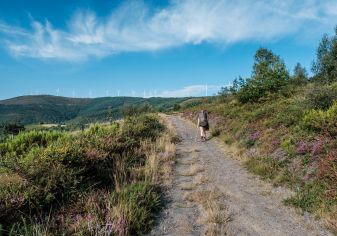
Camino Primitivo
Camino Primitivo – Oviedo to Santiago
- Journey 320km on the oldest of the Camino de Santiago routes
- Embark on an epic adventure through the heart of Asturias and Galicia
- Stay in the historic cities of Oviedo, Lugo and Santiago
- Earn your pilgrim certificate & attend the pilgrim mass in Santiago
$3,195.00

Camino del Norte
Camino del Norte – San Sebastian to Santander
- Spend time at San Sebastian’s most famous city beach – La Concha
- Savour the rich regional gastronomy of the Basque region
- Marvel at Bilbao’s iconic Guggenheim Museum
- Arrive in Santander via a traditional Pedrenera ferry boat
$3,195.00
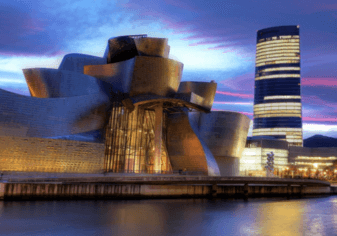
Camino del Norte
Camino del Norte – San Sebastian to Bilbao
- Marvel at Bilbao’s iconic Guggenheim Museum
- Explore medieval churches and charming seaside chapels
- Try Txakoli or Chacol an aromatic, slightly effervescent local wine
- Visit Gernika, immortalised by Pablo Picasso’s painting
$2,350.00
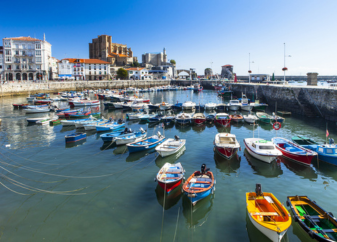
Camino del Norte
Camino del Norte – Bilbao to Santander
- Explore Bilbao’s bustling Ribera Market and riverside
- Take a dip in the Cantabrian Sea at one of the numerous fine playas
- Stop for a break in a fishing village and enjoy the local catch of the day
- Arrive in Santander via a traditional Pedrenera ferry boat
$1,895.00
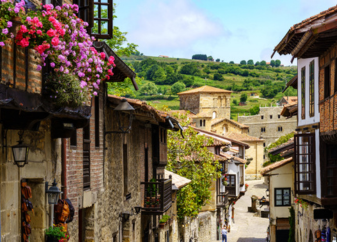
Camino del Norte
Camino del Norte – Santander to Gijon
- Soak up the seaside vibes and fine seafood in Santander
- Hike the beautiful coastline and rugged mountains of the Costa Verde
- Marvel at the seascapes and biodiversity of the Oyambre Natural Park
- Enjoy the dramatic scenery and beautiful beaches in Llanes
$2,720.00
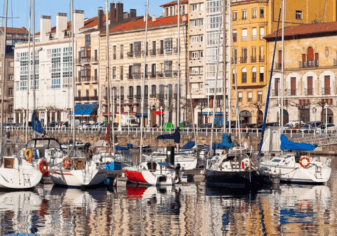
Camino del Norte
Camino del Norte – Gijon to Ribadeo
- Hike the less visited trails of Asturias’ ‘Green Coast’
- Visit the beautiful coastal village of Cadavedo
- Indulge in fresh seafood and tasty Asturian specialities
- Explore the narrow streets of Luarca’s ‘Fisherman’s Quarter’
$1,790.00
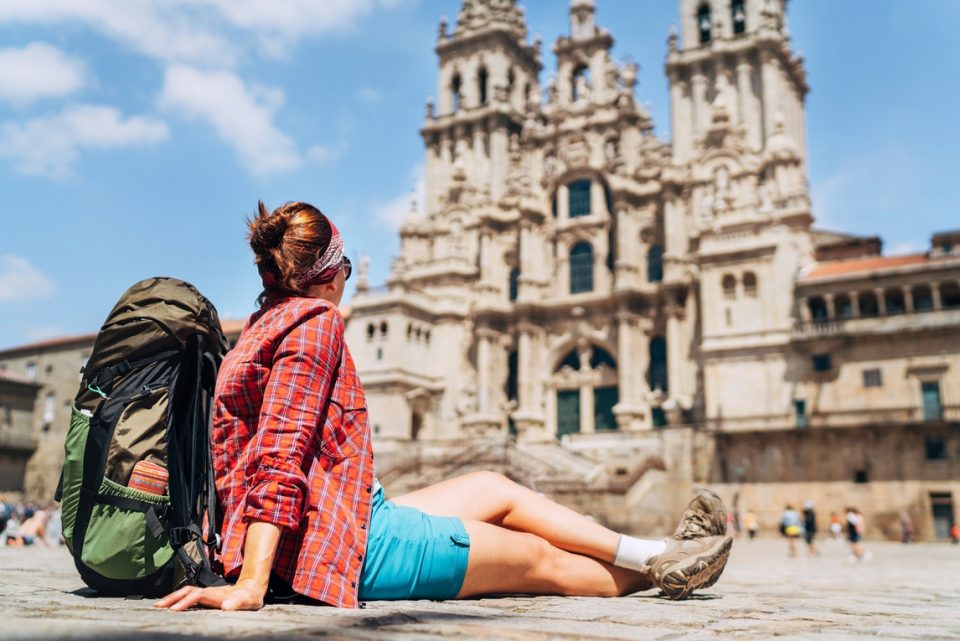
Camino del Norte
Camino del Norte – Ribadeo to Santiago de Compostela
- Visit Ribadeo’s coastline and the spectacular Praia das Catedrais
- Enjoy the solitude hiking the through peaceful rural Galicia
- Join in the excitement with many pilgrims as the Camino routes converge
- Qualify for your compostela by walking the last 100km into Santiago
$2,035.00
TRIP date selection
when would you like to travel?
Please select your preferred dates for on-demand trips or select a scheduled date for group departures. If you have booked a self-guided trip please understand that because your trip date is on demand and we must check availability of all properties on your chosen dates before it can be fully confirmed

